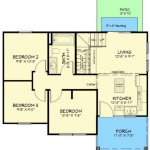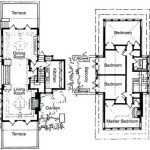House Floor Plan With Measurements: A Comprehensive Guide
When designing or renovating a home, having a detailed house floor plan with measurements is crucial. It provides a clear representation of the layout, room dimensions, and architectural features of the property. Understanding the importance of measurements in floor plans, this article will delve into the essential aspects of creating an accurate and comprehensive house floor plan with measurements.
Importance of Measurements in House Floor Plans:
- Accurate Construction: Measurements ensure precise construction and prevent errors or costly rework.
- Efficient Space Planning: By knowing the dimensions of each room, you can plan furniture placement, traffic flow, and storage options efficiently.
- Code Compliance: Building codes often specify minimum room sizes and clearances, which can be verified through measurements.
- Estimate Costs: Measurements are essential for calculating material quantities, labor estimates, and overall project costs.
Creating a House Floor Plan With Measurements:
To create a floor plan, follow these steps:
- Measure the Exterior Perimeter: Start by measuring the exterior walls of the house, including the length and width of each side.
- Sketch the Floor Plan: Draw the basic outline of the house, including all walls, doors, and windows. Label each room with its purpose.
- Measure Interior Dimensions: Determine the length and width of each room, as well as the height from floor to ceiling.
- Mark Wall Openings: Measure and indicate the location of doors, windows, and any other wall openings, including their width and height.
- Include Architectural Features: Note any architectural features such as staircases, fireplaces, built-in furniture, or unique ceiling treatments.
- Add Measurements: Clearly label the measurements of each room, wall, and opening in English units (feet or inches).
Tips for Measuring and Noting Dimensions:
- Use a laser measuring tool or a measuring tape for accuracy.
- Measure from the inside edge of walls to the inside edge of openings.
- Include window and door frames in the measurements.
- Note the location of studs, electrical outlets, and plumbing fixtures.
- Create a legend to define any symbols or abbreviations used on the floor plan.
Benefits of a Well-Planned House Floor Plan With Measurements:
A well-planned floor plan with accurate measurements offers numerous advantages:
- Improved Home Design: Allows for thoughtful space planning, resulting in a more functional and aesthetically pleasing living environment.
- Reduced Construction Time and Costs: Accurate measurements minimize errors, preventing costly delays and rework.
- Increased Property Value: A professionally drawn floor plan can enhance the perceived value of the property and make it more desirable to prospective buyers.
- Improved Maintenance and Renovations: Measurements provide a reference for future maintenance, renovations, or additions to the home.
Conclusion:
A house floor plan with accurate measurements is an essential tool for designing, constructing, and maintaining a home. By understanding the significance of measurements and following the steps outlined above, homeowners and professionals can create comprehensive floor plans that facilitate efficient space planning, reduce construction costs, and enhance the overall functionality of their living space.

12 Examples Of Floor Plans With Dimensions

12 Examples Of Floor Plans With Dimensions

12 Examples Of Floor Plans With Dimensions

How To Read A Floor Plan With Dimensions Houseplans Blog Com

Amazing Beautiful House Plans With All Dimensions Engineering Discoveries Create Floor

How To Read A Floor Plan With Dimensions Houseplans Blog Com

12 Examples Of Floor Plans With Dimensions

Floor Plans With Dimensions Including Examples Cedreo

Floor Plan With Dimensions Guide To Drawings Small House Blueprints Design S

A Floorplan Of Single Family House All Dimensions In Meters Scientific Diagram








